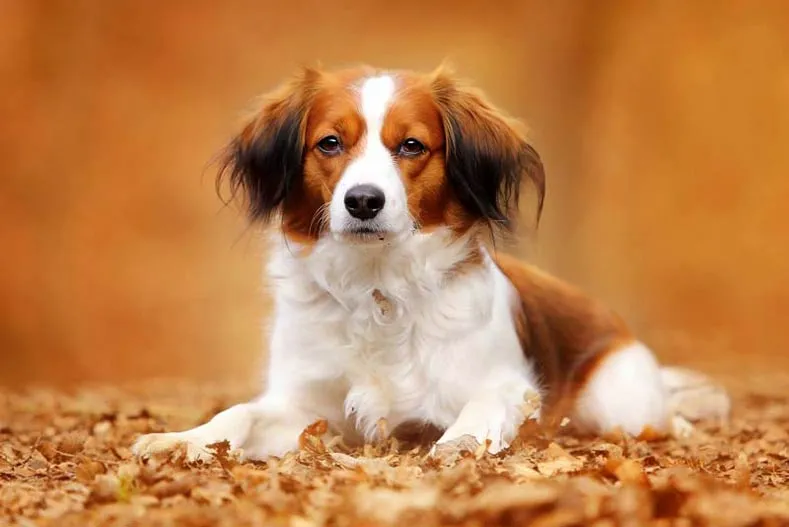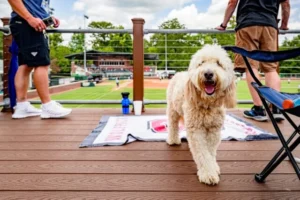Dutch Dogs

Dutch Dogs:- The Netherlands is a nation of dog lovers, much like the British or the Germans, with a deep appreciation for both international and native breeds. The country’s dog breeds are shaped by its geography, history, and the specific roles these dogs have played in Dutch society.
While some of these breeds are beloved and well-known within Dutch borders, many are less familiar outside of the Netherlands, even though they carry rich histories and unique qualities. From companion dogs to working dogs, the Dutch have a variety of breeds, each with its own special characteristics.

Drentsche Patrijshond
One of the most cherished breeds in the Netherlands is the Drentsche Patrijshond, also known as the Dutch Dogs. This versatile breed excels both as a hunting companion and a family pet. The Drentsche Patrijshond is known for its devotion, intelligence, and sociable nature, making it a wonderful dog for families, especially those with children. This breed thrives on human companionship and is known to be both gentle and patient, which makes it especially well-suited for households with kids.
As a hunting dog, the Drentsche Patrijshond is highly skilled, acting as a pointer and retriever. Its sharp intellect and eagerness to please make it easily trainable, whether for hunting tasks or general obedience. However, potential owners should be aware that this breed has a high energy level and needs plenty of daily exercise. Without sufficient physical and mental stimulation, the Drentsche Patrijshond can become restless or frustrated. If you are looking for a loyal and trainable companion, the Drentsche Patrijshond is an excellent choice, especially if you’re able to meet its need for activity.
Bouvier des Flandres
The Bouvier des Flandres, though originating in Flanders (a region that spans parts of Belgium and the Netherlands), has become a popular breed in the Netherlands as well. Initially bred as a herding dog, the Bouvier des Flandres was commonly seen driving cattle, pulling carts, and herding sheep. Over time, this breed’s impressive physical strength and intelligence led to its use in more diverse roles, such as police and security work.

Despite its rugged background, the Bouvier des Flandres has also become a cherished companion animal. In households across the Netherlands, this breed is valued for its calm demeanor, loyalty, and ability to form deep bonds with its family. However, it is important to note that the Bouvier des Flandres still retains much of its working dog instincts. This means that they require plenty of exercise and mental challenges to stay happy and well-balanced.
Hollandse Herdershond (Dutch Shepherd)
Another remarkable Dutch breed is the Hollandse Herdershond or Dutch Shepherd. Historically, the Dutch Shepherd was a valuable working dog, especially for herding sheep. In rural Netherlands, large flocks of sheep would graze on open land, and the Dutch Shepherd was tasked with keeping them in check, guiding them to grazing areas, and protecting them from potential threats.
The Dutch Shepherd breed is known for its versatility and high intelligence. This has made them successful in modern dog sports such as agility, obedience, and herding trials. While the role of shepherding has diminished in contemporary times, some Dutch Shepherds still work in this capacity, particularly in more rural areas. Most, however, are now found in homes as loyal and trainable companions. Their athleticism and sharp instincts require consistent physical and mental stimulation, making them an excellent match for active families.
Nederlandse Kooikerhondje
The Nederlandse Kooikerhondje is another historical Dutch breed, dating back to at least the 17th century. It appears in many Dutch paintings from the Golden Age, often depicted as a family companion. However, this breed was also used for a specific task—decoying ducks. By waving its white-tipped tail, the Kooikerhondje would lure curious ducks into a trap, allowing hunters to catch them. Though this form of hunting has largely fallen out of practice, the breed still retains its energetic and playful nature.
Nowadays, the Nederlandse Kooikerhondje is primarily a companion dog, but it remains highly active and requires an engaging lifestyle. This breed does best with families who can provide regular exercise and mental stimulation, as it has a natural desire to stay busy. Its small size and cheerful disposition make it a good fit for many households, but it should not be mistaken for a low-energy breed. The Kooikerhondje thrives on activity and interaction.
Saarloos Wolfdog
The Saarloos Wolfdog is perhaps one of the most visually striking breeds in the Netherlands, known for its wolf-like appearance. This breed originated from a cross between a German Shepherd and a Eurasian wolf in the early 20th century, thanks to the efforts of a Dutch breeder named Leendert Saarloos. His goal was to create a breed that combined the intelligence and loyalty of the German Shepherd with the endurance and instinctive behaviors of the wolf.

While the Saarloos Wolfdog may look wild, it is known for being a loyal and affectionate companion. It forms deep bonds with its human family and thrives on social interaction, though it can be somewhat reserved around strangers. This breed requires a lot of space and exercise, as well as an owner who understands its unique temperament. For those willing to invest time and effort into training and socialization, the Saarloos Wolfdog offers a rewarding and close-knit relationship.
Keeshond
The Keeshond is a quintessential Dutch breed, known for its spitz-like appearance with a fox-like face, bushy tail, and thick fur. Historically, the Keeshond was a companion dog for Dutch barge workers, and it quickly became a symbol of the Dutch Patriot political movement in the 18th century. This breed is still highly popular in the Netherlands today, known for its affectionate and cheerful nature.
Keeshonden are intelligent and eager to please, which makes them relatively easy to train. They are also highly adaptable and capable of living in both small apartments and larger homes. Despite their fluffy appearance, they do not require extensive grooming—weekly brushing and occasional baths are usually enough. The Keeshond’s friendly and outgoing personality makes it an ideal family dog, especially in homes where companionship and interaction are valued.
Conclusion
Dutch dog breeds reflect the country’s culture, from hardworking herding dogs like the Dutch Shepherd and Bouvier des Flandres to loyal family companions like the Drentsche Patrijshond and Keeshond. Although many of these breeds are not as widely known outside of the Netherlands, they hold a special place in Dutch hearts, cherished for their versatility, intelligence, and companionship. Whether you are looking for a hunting partner, a loyal friend, or an active family dog, Dutch breeds offer a diverse range of qualities suited to various lifestyles.
Also Read:-






